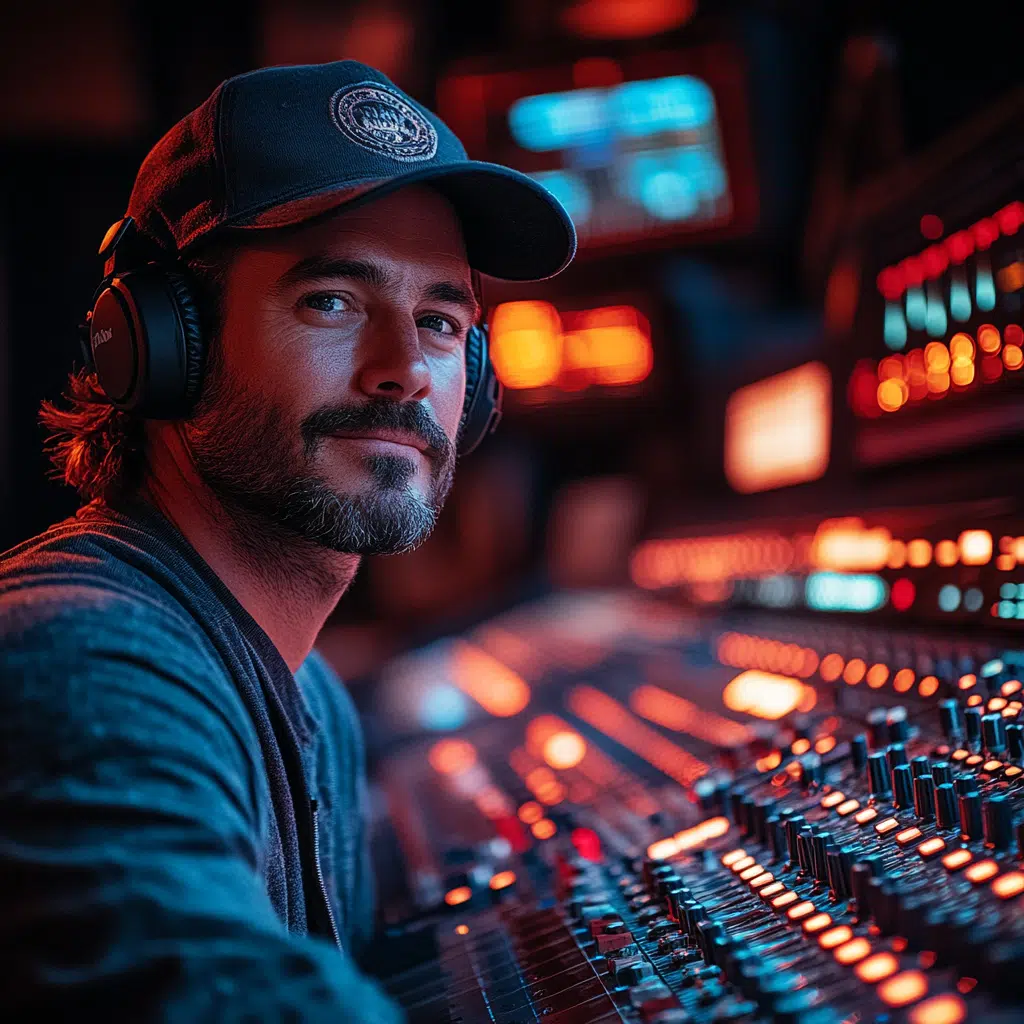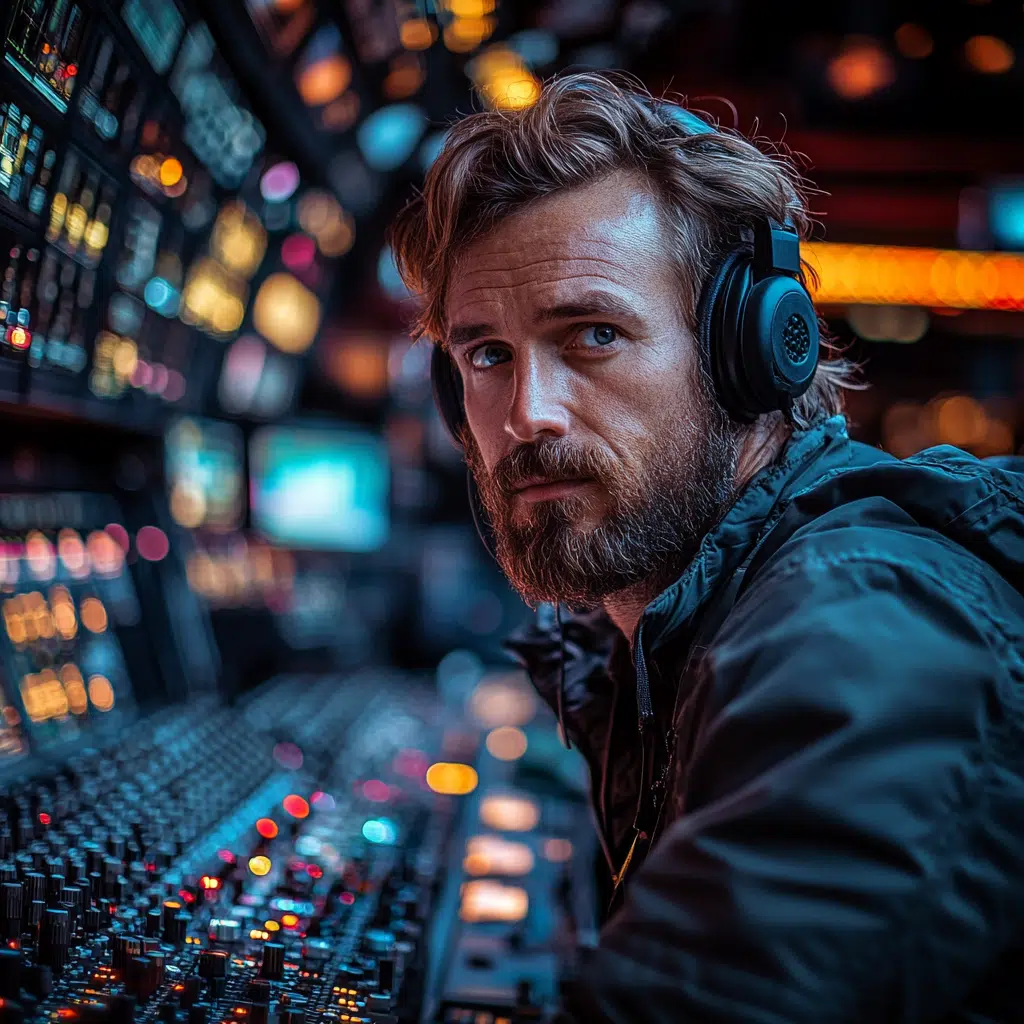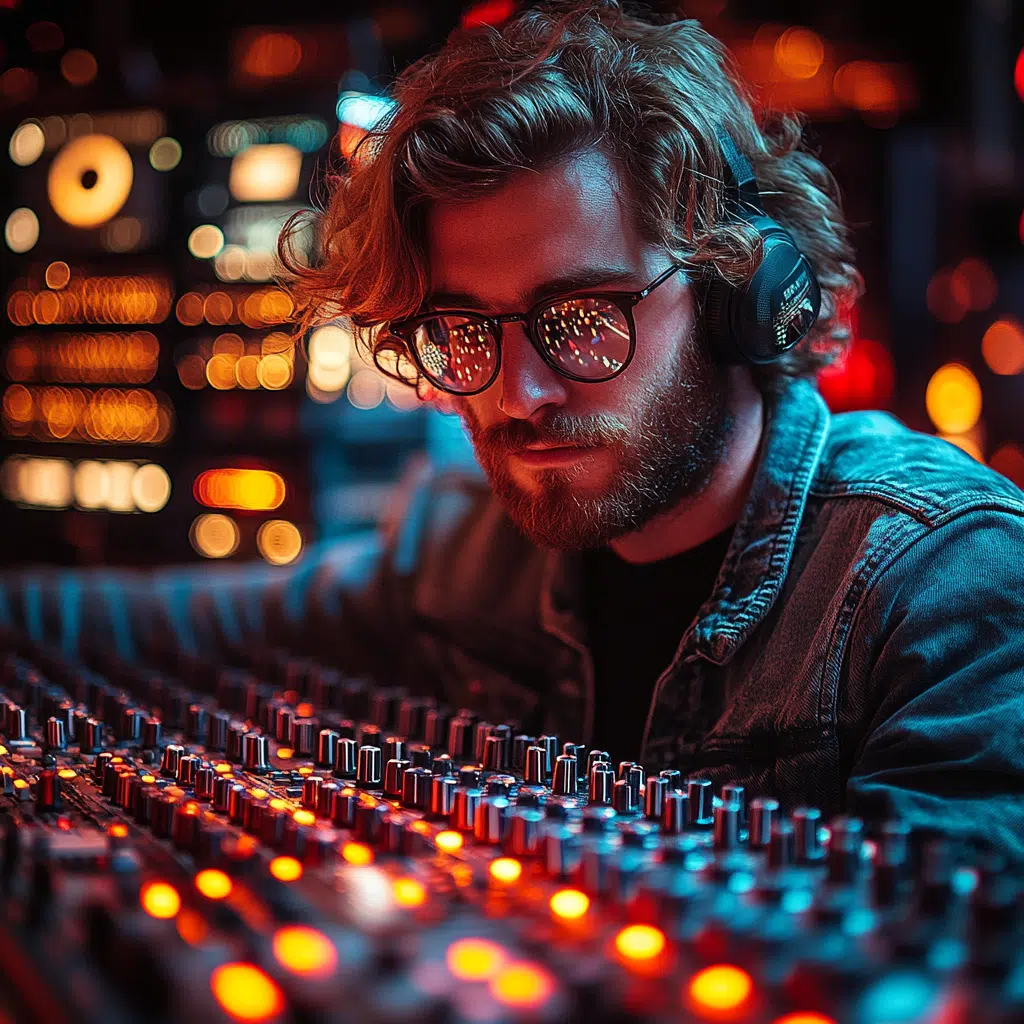In today’s streaming world, Dolby Atmos mixing for streaming services has emerged as a game-changer. As audiences crave richer, more immersive experiences, platforms like Netflix, Disney+, and Apple TV+ have embraced this innovative technology. With Dolby Atmos, sound isn’t limited to just your left and right speakers; it surrounds you, drawing you more intimately into the narrative. By mastering Dolby Atmos, sound designers can place sounds at different heights and depths, simulating a true cinematic environment right from your living room. It’s something that can send chills down your spine, just like a well-timed jump scare in “A Quiet Place.”
1. The Rise of Dolby Atmos in Streaming Platforms
The sheer breadth of content available via streaming services has led to an explosion of competition—everyone wants viewers to choose their platform over others. This is where Dolby Atmos mixing for streaming services comes into play. It creates a sound environment that makes you feel like you’re part of the action. Whether it’s the hustle and bustle of a city street or the ominous sounds of a lonely cabin in the woods, Dolby Atmos lets those sounds come alive. Compared to traditional stereo set-ups, this surround sound technology offers a multi-dimensional sound landscape that elevates the viewing experience.
The pandemic drove a surge in at-home viewing, pushing services to innovate. Companies started investing heavily in audio technology to enhance their content. As a result, Dolby Atmos mixers have become essential to creating engaging audio experiences. By expanding the auditory range, Dolby Atmos ensures that viewers will remember their experiences long after the credits roll. With compelling soundscapes, filmmakers can truly widen the emotional spectrum of their narratives.
Not only is Dolby Atmos about fitting sounds around your room—it’s about immersing you in the world being portrayed. When you watch a nature documentary, wouldn’t you want the rustle of leaves moving overhead or the chirping of birds surrounding you? That’s the magic of Dolby Atmos and its game-changing potential for storytelling. Whether it’s gripping drama or comical animation, this technology keeps viewers captivated.
2. Top 5 Streaming Services Elevating Audio with Dolby Atmos Mixing
In the crowded streaming scene, several platforms have stepped up to leverage Dolby Atmos mixing for streaming services effectively. Here are the top five that have made significant strides in improving audio quality.
These platforms highlight how Dolby Atmos mixing for streaming services makes a noteworthy difference in content consumption. If you haven’t experienced it yet, you’re in for a transformative auditory treat!
3. Understanding the Technical Mechanics of Dolby Atmos Mixing
When diving into Dolby Atmos mixing for streaming services, it’s essential to understand how it differs from traditional surround sound setups. In contrast to channel-based audio systems, Dolby Atmos operates on an object-based audio framework. This allows sound designers to determine the exact location of each sound. In Dolby Atmos, sound is treated as individual entities—these can move freely within a three-dimensional space, creating a very detailed audio environment.
To truly appreciate Dolby Atmos, having the right setup is crucial. A standard configuration often recommended involves a 5.1.4 layout: that’s five speakers positioned at ear level, one subwoofer, and four overhead speakers. This setup enables filmmakers to create dynamic soundscapes that twist and turn around the listener, ensuring that they feel fully integrated into the experience.
Mixing techniques vary greatly in Dolby Atmos. Elements such as dialogue, foley, and musical scores need careful placement and movement to amplify emotional impact. You might find sounds soaring above or quietly lurking behind, offering tension or surprise based on the story arc. Notably, the creative process is as intricate as it is artistic, and many sound engineers combine this technology with traditional techniques to deliver unparalleled audio fidelity.
4. The Impact of Dolby Atmos Mixing on Audience Engagement
Let’s get to the nitty-gritty: how does Dolby Atmos mixing for streaming services impact audience engagement? Well, research suggests a strong correlation between immersive audio experiences and viewer retention. A study highlighted that users are more likely to finish watching a series if they feel enveloped by soundscapes that resonate emotionally.
Consider the critically acclaimed film “A Quiet Place.” Its innovative sound design, which strategically utilized silence and sudden bursts of sound, left audiences gasping and gripping their seats. It’s the meticulous blending of atmospheres and impacts that kept viewers on edge and emotionally tethered to the story. Such films don’t just entertain; they involve the audience in experiences that stir deep emotional connections.
Real-world case studies affirm the value of Dolby Atmos mixing for streaming services. It’s not just about flashy visuals; evidence shows that sound plays a key role in how stories land. This blending of audio and visuals elevates overall storytelling, making narratives richer and more compelling. For filmmakers and producers, this means leveraging sound could be the secret weapon to not just garnering viewership but also fostering loyalty among audiences.
5. Innovating Original Music Composition for Dolby Atmos Content
As we dive deeper into the intricacies of Dolby Atmos mixing for streaming services, we can’t overlook original music composition. Composers are now creating soundtracks specifically crafted for Dolby Atmos technology. Spatial audio opens up new compositional pathways that allow musicians to innovatively explore sound placement and depth.
Contemporary composers have begun embracing this three-dimensional sound design. They understand that every note and instrument, when appropriately placed in a three-dimensional space, can lead to new emotional heights in storytelling. Some have expressed how creating music for Atmos feels liberating—offering an expansive canvas to paint audio masterpieces that immerse listeners deeply.
By collaborating with sound designers, these composers can harness techniques that fuse music with sound design seamlessly. The result? An atmospheric auditory experience, unique to the narrative’s emotional beats. If film scores can make your heart race or bring you to tears, imagine the exhilarating potential unleashed through atmospheric mixing.
6. Future Trends: The Evolution of Dolby Atmos in Streaming
Looking ahead, the future of Dolby Atmos mixing for streaming services shines brightly. With advancements in technology and increasing accessibility, more creators are expected to jump on the Dolby bandwagon. We see budding partnerships between audio engineering and cutting-edge visual technologies, like virtual reality (VR) experiences and AI-driven sound design.
Additionally, the notion of object-based audio will continue to evolve. There’s room to explore all kinds of new methodologies for mixing and mastering sound. As many producers embrace remote collaboration—like utilizing remote dialogue mixing services—they’ll find ways to streamline their processes while still crafting high-quality audio experiences.
As streaming platforms invest in such innovative methods, we can anticipate even more steps toward blurring the lines between reality and digital experiences. The reinvention of storytelling through sound might reframe the future approach to content creation entirely. Buckle up, because the auditory journey is merely beginning!
7. How to Experience Dolby Atmos Mixing for Yourself
So, how can you experience the brilliance of Dolby Atmos mixing for streaming services from the comfort of your own home? Setting up your audio system may seem a bit daunting, but I promise, it’s not as tricky as it appears.
First off, consider investing in a good 5.1.4 setup—this usually includes five speakers positioned at ear level, one subwoofer, and four overhead speakers. You can even look into soundbars designed explicitly for Dolby Atmos, like the Sonos Arc or the Samsung HW-Q950T, which can mimic spatial audio nicely.
Next, ensure your streaming device supports Dolby Atmos. Most current-generation devices, like the Apple TV 4K and Amazon Fire TV Stick, do the trick. As for content, catch a flick on platforms like Disney+, Apple TV+, or the others we mentioned—trust me, the experience will be worth it!
In conclusion, Dolby Atmos mixing for streaming services is more than just a passing trend; it’s a game-changing technique that elevates storytelling through sound. As platforms continue to adopt and enhance this technology, we’re witnessing an auditory revolution likely to reshape how audiences experience media consumption. So embrace Dolby Atmos, as it certainly shapes the future of entertainment, ensuring you’re not just watching; you’re living the story.
Dolby Atmos Mixing for Streaming Services
A Sound Revolution for Home Entertainment
Did you know that Dolby Atmos Mixing for Streaming Services transforms the way we experience sound in movies and shows? This innovative audio technology creates a three-dimensional sound space that immerses viewers fully into the story. With Atmos, sounds can come from above or behind, making every action-packed scene that much more exhilarating. It’s like being in the front row of a concert or the center of an epic battle — a whole new audio experience! By diving into the art of Dolby Atmos audio post production, sound designers are elevating our viewing experiences, allowing us to feel every emotion conveyed through sound.
Trivia Tidbits: The Impact of Mixing
And here’s a fun nugget: when Dolby Atmos Mixing for Streaming Services was first introduced, it seemed destined to change how we enjoy films forever. Major platforms like Netflix and Disney+ embraced it, allowing viewers to revel in captivating audio. You know, sound design has come a long way from the days of static two-channel audio. Speaking of evolution, the approach to audio creation is shifting with the rise of virtual mixing For film And TV, allowing sound professionals to craft rich audio landscapes from anywhere in the world, making filmmaking more accessible than ever!
Soundtrack to Stories
It’s intriguing to think about how Dolby Atmos enables storytelling through sound, much like how Stephen King crafts narratives in his works such as Rage. Just as King’s tales pull readers into thrilling scenarios, Dolby Atmos pulls listeners into an audio journey, making it a fitting tool for emotional storytelling. Plus, having a captivating soundtrack can enhance viewer engagement, keeping folks glued to their screens for hours. Whether it’s a romantic comedy sprinkled with moments akin to a scene of lesbian tongue kissing or action-packed adventures like Ranger Reject, mixed audio ensures moods are perfectly set for each scene.
So, as we welcome more streaming services adopting Dolby Atmos Mixing for Streaming Services, including exciting projects featuring talents like Biff Poggi, you can bet sound will remain a key player in our entertainment. Eventually, each flick and series will showcase the magic of sound, ensuring that every laugh or gasp resonates deeply with audiences. And who wouldn’t want to enjoy that? Don’t forget to say Feliz Miercoles while you binge-watch your favorite shows, and prepare for a sound experience that’s truly spectacular!
Do streaming services support Dolby Atmos?
Yes, several streaming services support Dolby Atmos, including DirecTV Stream, Disney+, Apple TV+, Netflix, Amazon Prime, Max, and Vudu.
Should I mix with Dolby Atmos?
Mixing with Dolby Atmos can really enhance your project by immersing viewers in the sound. It allows you to place and move sounds around, creating a more engaging experience.
How much does Dolby Atmos mixing cost?
The cost for Dolby Atmos mixing is $450 per mix, and if you need an alternate version like cleans or instrumentals, it’s $250.
What are the requirements for Dolby Atmos mixing?
To mix in Dolby Atmos, you should have a 5.1.4 layout, which consists of five speakers on the listener plane, one subwoofer, and four overhead speakers.
Does Netflix output Dolby Atmos?
Yes, Netflix does output Dolby Atmos for select titles, providing a richer audio experience on supported devices.
Does HBO Max stream Dolby Atmos?
HBO Max also streams content in Dolby Atmos, so you can enjoy immersive sound with their offerings.
What are the downsides of Dolby Atmos?
Some downsides to Dolby Atmos include the need for specific equipment and a more complex mixing process, which could be challenging for smaller productions.
Which audio format is best for Dolby Atmos?
The best audio format for Dolby Atmos is typically a lossless format, as it helps maintain the quality of the sound while providing immersive capabilities.
Do Atmos mixes get mastered?
Yes, Atmos mixes do get mastered to ensure that the audio levels are balanced and the overall sound is polished for various playback systems.
What is the minimum room size for Dolby Atmos mixing?
For mixing Dolby Atmos, a minimum room size isn’t strictly defined, but a larger space can help with sound placement and clarity.
Do you need multiple speakers for Dolby Atmos?
Yes, you do need multiple speakers for Dolby Atmos, specifically a setup that includes additional overhead speakers for the best experience.
What is the loudness of Dolby Atmos mix?
The loudness of a Dolby Atmos mix can vary, but it’s generally calibrated to meet loudness standards while enhancing the audio experience.
What speaker placement for Dolby Atmos mixing?
For speaker placement in Dolby Atmos mixing, the five speakers should be at ear level, the subwoofer at the front, and the four overhead speakers evenly spaced above the listening area.
Does Spotify support Dolby Atmos?
Spotify currently does not support Dolby Atmos, so you won’t find that immersive sound experience on their platform yet.
How many outputs do you need for Dolby Atmos?
To achieve Dolby Atmos mixing, you’ll need a minimum of seven outputs: five for the main speakers, one for the subwoofer, and one for the overhead speakers.
Does Disney+ support Dolby Atmos?
Disney+ supports Dolby Atmos, allowing viewers to enjoy a more immersive audio experience with their movies and shows.
Does Peacock support Dolby Atmos?
Peacock also streams content in Dolby Atmos, making it easier for viewers to experience sound that surrounds them.
Does Hulu support Dolby Atmos?
Hulu does support Dolby Atmos, which enhances the viewing experience with spatial audio.
Does Spotify support Dolby Atmos?
As mentioned, Spotify currently doesn’t have Dolby Atmos support, so you won’t get that immersive audio experience from their service.



